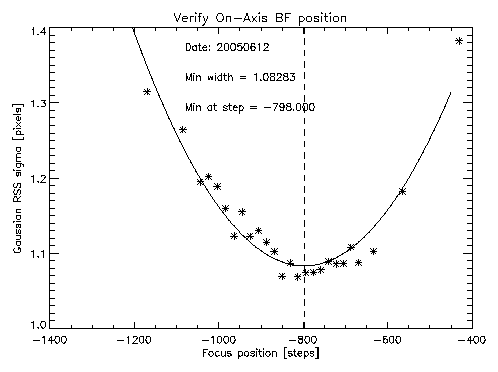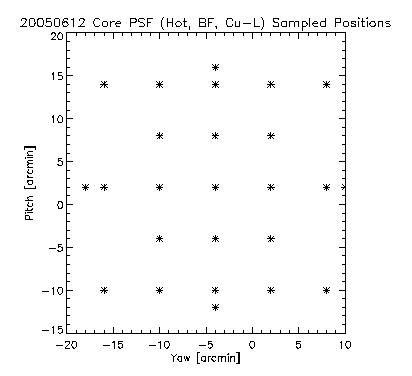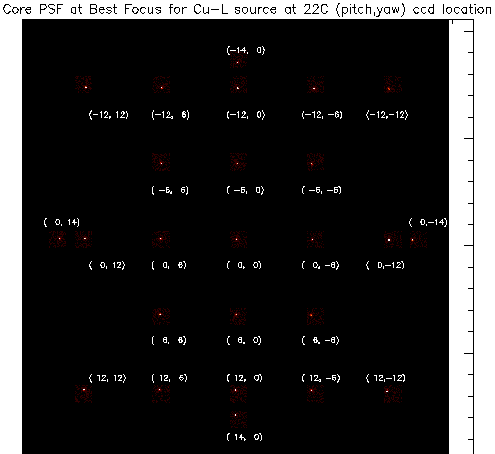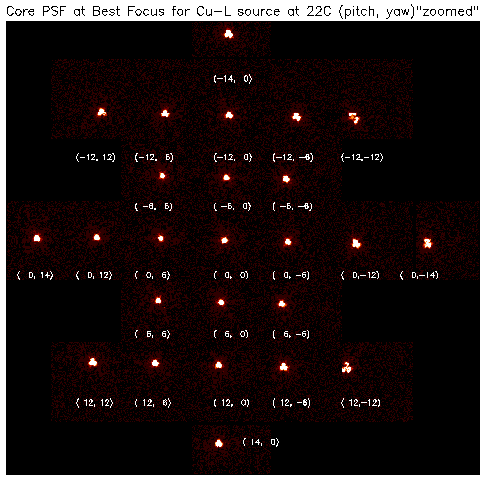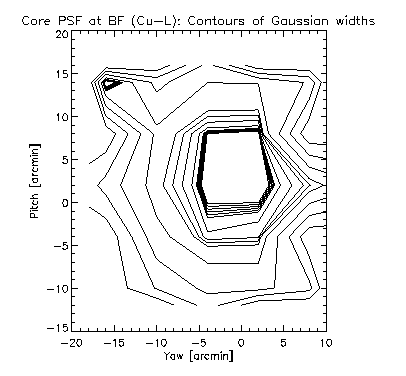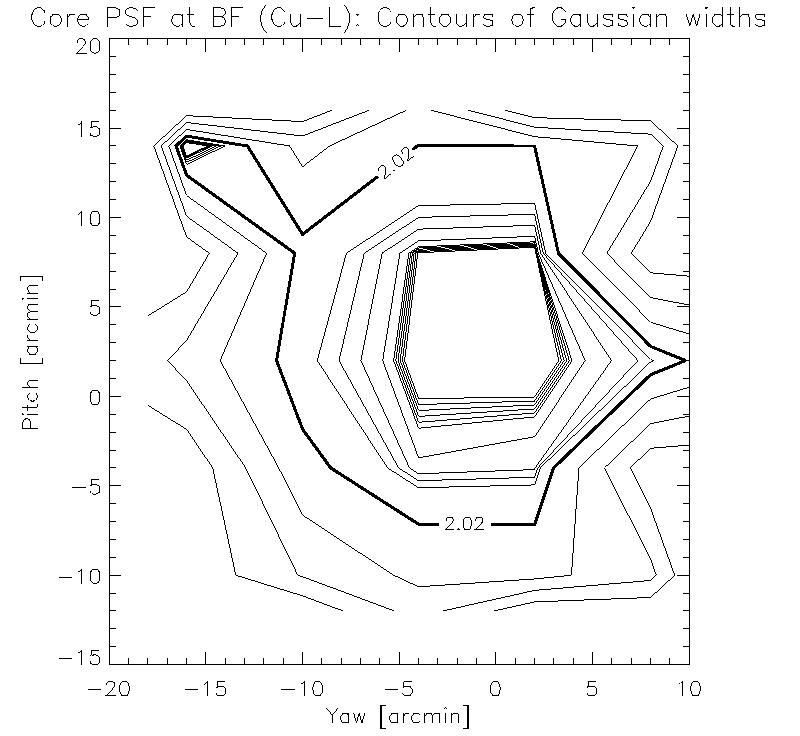Harvard-Smithsonian Center for Astrophysics
XRT E2E Test
Day 20050612
Test Conductor B. Podgorski
Shift Scientists J. Cirtain, M. Weber, & J. Scott
Best On-Axis Focus at 22 C
We have performed the "hot case" PSF tests at 22 C. For a set of 27 focus positions running from -1353 to -431 steps, in jumps of 10 um, we took images and fit the spots with 2D Gaussians. The RSS Gaussian sigmas are plotted below as a function of focus position.
The data were fitted with a 2nd degree polynomial to locate the minimum
width at Best Focus. The result is BF = -798 steps = -486 um. The position
we found on 20050607 was BF = -850 steps = -515 um. Therefore, the focal
length has only changed by approximately 29 um. The variance of our
measurements in the vicinity of Best Focus typically implied that our
uncertainty in determining the Best Focus position is on the order of 40
um. Therefore, we conclude that the focal length has not appreciably
changed. (The data points in the plot below do not look inconsistent with a
value of BF = -850 steps.)
Core PSF at 22 C
In addition to the PSF measurements, we also did the pitch and yaw scans for the best focus position determined from the measurements of the PSF sigma widths as a function of pitch and yaw. It was found that the alignment did not change with changes in temperature. A contour plot of the RSS widths determied from the 2d gaussian fits is shown below along with a plot of the pitch and yaw positions.
The Japanese scientists (Sakao-san specifically) requested a vignetting run after all of the tests were complete. This sub-test was performed and added to the as-run procedure. The analysis for this data was only done on a perfunctory basis and no data products were generated. It was decided expo facto to re-do this sub-test during the flight configuration tests performed on 20050614.
